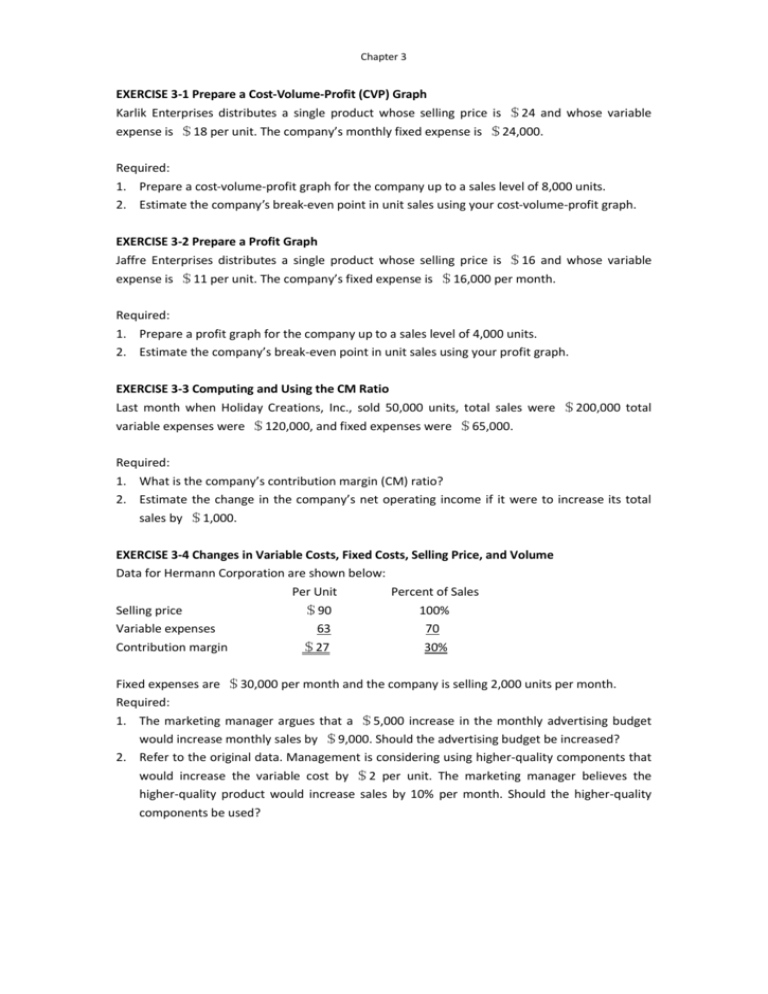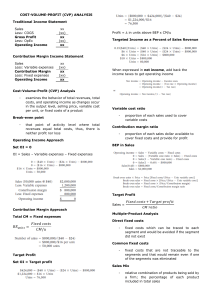EXERCISE 3-1 Prepare a Cost-Volume
advertisement

Chapter 3 EXERCISE 3-1 Prepare a Cost-Volume-Profit (CVP) Graph Karlik Enterprises distributes a single product whose selling price is $24 and whose variable expense is $18 per unit. The company’s monthly fixed expense is $24,000. Required: 1. Prepare a cost-volume-profit graph for the company up to a sales level of 8,000 units. 2. Estimate the company’s break-even point in unit sales using your cost-volume-profit graph. EXERCISE 3-2 Prepare a Profit Graph Jaffre Enterprises distributes a single product whose selling price is $16 and whose variable expense is $11 per unit. The company’s fixed expense is $16,000 per month. Required: 1. Prepare a profit graph for the company up to a sales level of 4,000 units. 2. Estimate the company’s break-even point in unit sales using your profit graph. EXERCISE 3-3 Computing and Using the CM Ratio Last month when Holiday Creations, Inc., sold 50,000 units, total sales were $200,000 total variable expenses were $120,000, and fixed expenses were $65,000. Required: 1. What is the company’s contribution margin (CM) ratio? 2. Estimate the change in the company’s net operating income if it were to increase its total sales by $1,000. EXERCISE 3-4 Changes in Variable Costs, Fixed Costs, Selling Price, and Volume Data for Hermann Corporation are shown below: Per Unit Percent of Sales Selling price $90 100% Variable expenses 63 70 Contribution margin $27 30% Fixed expenses are $30,000 per month and the company is selling 2,000 units per month. Required: 1. The marketing manager argues that a $5,000 increase in the monthly advertising budget would increase monthly sales by $9,000. Should the advertising budget be increased? 2. Refer to the original data. Management is considering using higher-quality components that would increase the variable cost by $2 per unit. The marketing manager believes the higher-quality product would increase sales by 10% per month. Should the higher-quality components be used?











